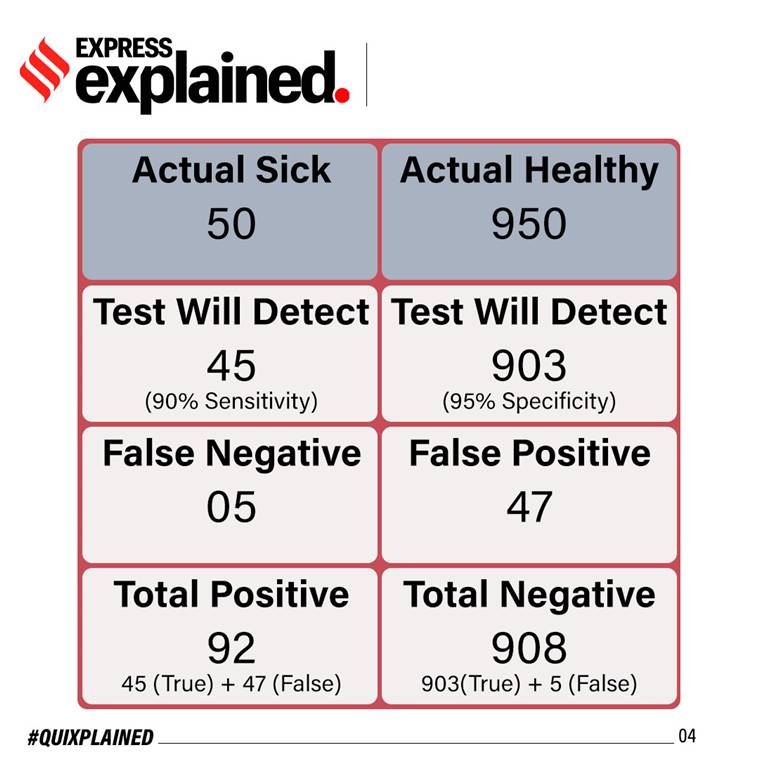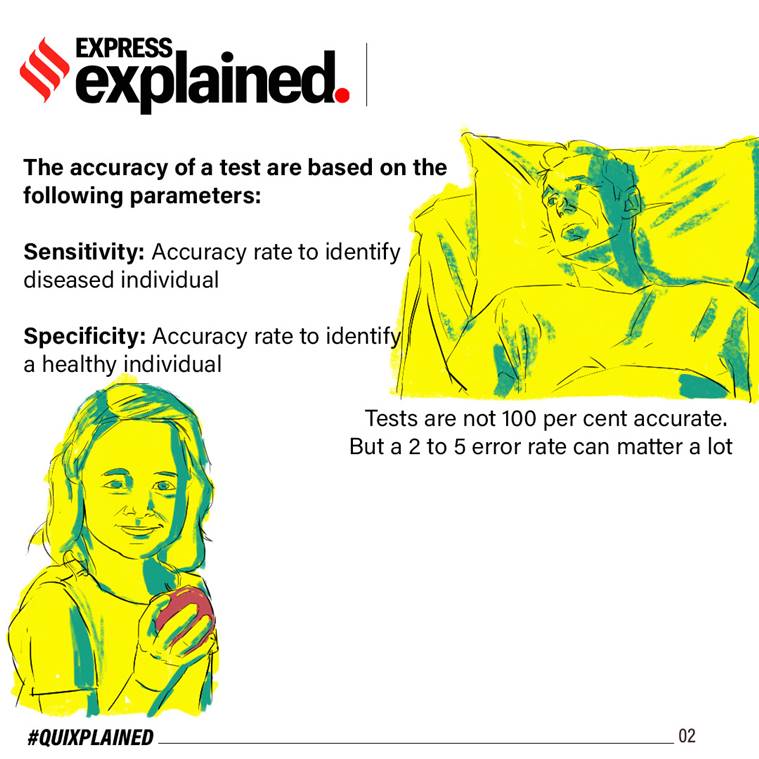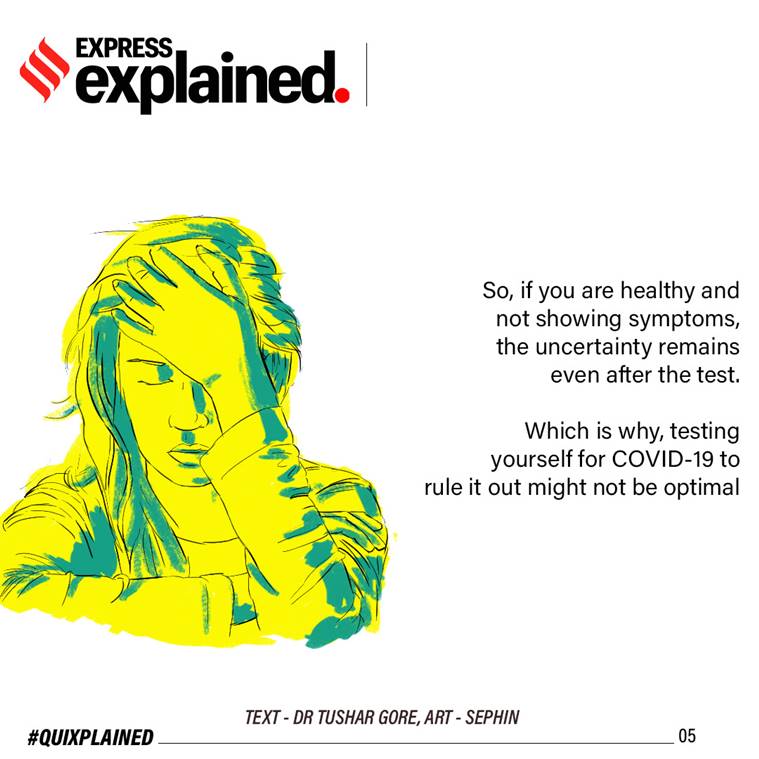Quixplained: Should you get tested for Covid-19 just to rule it out?
Diagnostic tests, including the ones used for detection of the novel coronavirus, have a margin of error and often generate results that are false positives or false negatives.
 No test for Covid-19 is 100 per cent accurate.
No test for Covid-19 is 100 per cent accurate. No test for Covid-19 is 100 per cent accurate. Diagnostic tests, including the ones used for detection of the novel coronavirus, have a margin of error and often generate results that are false positives or false negatives. A false positive means that the test incorrectly labels a healthy person as diseased. Similarly, a false negative means the test incorrectly marks a diseased person as healthy.
Therefore, accuracy of a test is measured by two parameters — aligned with the two goals. Sensitivity is the ability of the test to correctly identify diseased individuals. A highly sensitive test correctly picks up a large percentage of the diseased people. It is calculated as the number of positives detected out of the number of diseased individuals tested. So, if out of 100 people who undertake the test, 10 are sick, and nine of them get correctly identified by the test, then the sensitivity would be 90 per cent.
The second measure, the ability to correctly identify healthy individuals, is called specificity. It is calculated in a similar manner. Most tests have different sensitivity and specificity values.
 More than 63 lakh people in India have tested positive for Covid-19 so far.
More than 63 lakh people in India have tested positive for Covid-19 so far.
 No test is 100 per cent accurate.
No test is 100 per cent accurate.
 Accuracy of a test is measured by two parameters — aligned with the two goals.
Accuracy of a test is measured by two parameters — aligned with the two goals.
 Tests are not 100 per cent accurate
Tests are not 100 per cent accurate
 So, if you are healthy and not showing symptoms, the uncertainty remains even after the test.
So, if you are healthy and not showing symptoms, the uncertainty remains even after the test.
Don’t miss from Quixplained | What is MSP and how is it determined?
- 01
- 02
- 03
- 04
- 05






































